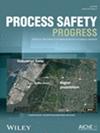Benefits of customizing dust hazard controls to meet your needs
IF 1
4区 工程技术
Q4 ENGINEERING, CHEMICAL
引用次数: 0
Abstract
The OSHA Combustible Dust National Emphasis Program (NEP), recent studies commissioned by the National Fire Protection Association (NFPA) Research Foundation and U.S. Chemical Safety and Hazard Investigation Board (CSB), as well as emphasis by insurance companies have brought more urgency to combustible dust safety. NFPA standards are being revised for consistency and clarity of standards for combustible dust safety. While that is a significant improvement from conditions of past decades, the situation can be improved even more by implementing risk‐based methods to help develop application‐specific explosion protection. Many facilities that handle combustible particulate solids follow prescriptive requirements of applicable NFPA standards, especially for new installations. Decisions are often driven primarily by meeting codes and standards with minimum capital cost. Legacy installations that do not meet current standards typically claim “grandfather” status as the reason for not implementing the current standard requirement or good engineering practice. The goal of this paper is to present a method of adapting the familiar process safety risk matrix to assess likelihood of a deflagration event rather than the overall the risk of a consequence. This method provides an objective basis to assist staff of a legacy facility to make decisions to prioritize capital improvement projects, to follow current good engineering practice, and to stop relying on “grandfather” status. This paper makes the broad, practical assumption that any deflagration event has serious consequences. The magnitude of those consequences may vary based on facility siting, deflagration area of effect, population of personnel in the affected area, or business criticality of affected equipment and structures. Decisions based solely on the likelihood matrix may inadvertently prioritize a more likely, but less consequential, concern over an event that may put multiple people at risk, or have serious commercial implications. Methods such as Hazard and Operability Study (HAZOP), Failure Modes and Effects Analysis (FMEA), Fault Tree Analysis (FTA) and Layer of Protection Analysis (LOPA) are useful to more comprehensively understand risks. Flexible, outside‐the‐box thinking in applying safeguards, Independent Protection Layers (IPLs), administrative controls, and facility siting may provide a better solution than merely following prescriptive code without making the effort to fully understand the hazard.根据您的需求定制粉尘危害控制措施的好处
美国职业安全与健康管理局(OSHA)的可燃粉尘国家重点计划(NEP)、美国消防协会(NFPA)研究基金会和美国化学品安全与危害调查委员会(CSB)委托进行的最新研究,以及保险公司的重视,都给可燃粉尘安全带来了更大的紧迫性。美国国家防火协会(NFPA)正在对可燃粉尘安全标准进行修订,以确保标准的一致性和明确性。虽然这与过去几十年的情况相比有了很大改善,但通过实施基于风险的方法来帮助开发针对特定应用的防爆保护,情况还可以得到进一步改善。许多处理可燃微粒固体的设施都遵循适用的 NFPA 标准的规定要求,尤其是对于新安装的设施。作出决定的主要原因通常是要以最低的资本成本达到规范和标准。不符合现行标准的旧设备通常会以 "不溯既往 "为由不执行现行标准要求或良好的工程实践。本文的目的是介绍一种方法,将人们熟悉的工艺安全风险矩阵进行调整,以评估爆燃事件的可能性,而不是后果的总体风险。这种方法提供了一个客观的基础,可以帮助遗留设施的工作人员做出决定,确定基本建设改进项目的优先次序,遵循当前的良好工程实践,并停止依赖 "祖父 "地位。本文提出了一个广泛而实际的假设,即任何爆燃事件都会造成严重后果。这些后果的严重程度可能因设施选址、爆燃影响范围、受影响区域的人员数量或受影响设备和结构的业务关键性而有所不同。仅根据可能性矩阵做出决定,可能会无意中优先考虑可能性较大但后果较小的问题,而不是可能危及多人或具有严重商业影响的事件。危险与可操作性研究 (HAZOP)、故障模式与影响分析 (FMEA)、故障树分析 (FTA) 和保护层分析 (LOPA) 等方法有助于更全面地了解风险。在应用保障措施、独立保护层 (IPL)、行政控制和设施选址时,灵活、跳出框框的思维可能会提供更好的解决方案,而不是仅仅遵循规范而不去努力充分了解危险。
本文章由计算机程序翻译,如有差异,请以英文原文为准。
求助全文
约1分钟内获得全文
求助全文
来源期刊

Process Safety Progress
工程技术-工程:化工
CiteScore
2.20
自引率
10.00%
发文量
99
审稿时长
6-12 weeks
期刊介绍:
Process Safety Progress covers process safety for engineering professionals. It addresses such topics as incident investigations/case histories, hazardous chemicals management, hazardous leaks prevention, risk assessment, process hazards evaluation, industrial hygiene, fire and explosion analysis, preventive maintenance, vapor cloud dispersion, and regulatory compliance, training, education, and other areas in process safety and loss prevention, including emerging concerns like plant and/or process security. Papers from the annual Loss Prevention Symposium and other AIChE safety conferences are automatically considered for publication, but unsolicited papers, particularly those addressing process safety issues in emerging technologies and industries are encouraged and evaluated equally.
 求助内容:
求助内容: 应助结果提醒方式:
应助结果提醒方式:


